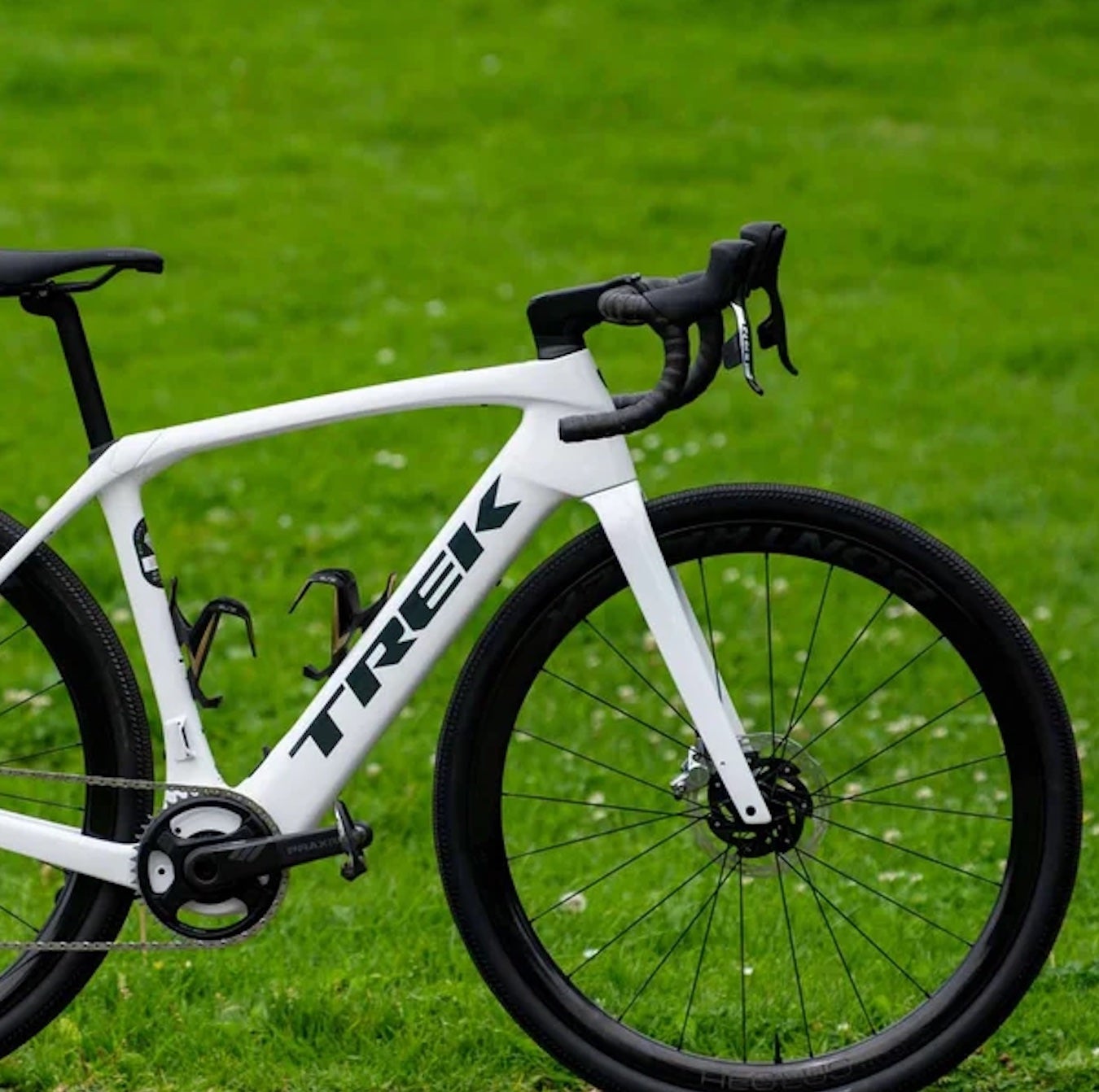On the heels of the endurance bike, Trek has introduced an electric version called the Domane+ SLR that improves significantly upon the brand’s previous e-road bikes.��
The Domane+ SLR is a mid-drive Class-3 e-bike, meaning it is powered by a motor in the bottom bracket and can achieve assisted speeds of 28 miles per hour (in the United States at least—other markets have differing maximum legal speeds). By utilizing a compact and quiet, yet still powerful, TQ harmonic pin ring motor, and building the bike with top-end OCLV 800 carbon, Trek designed a lightweight, sleek package weighing under 30 pounds.��
Trek also borrowed features from the non-electric Domane SLR, including non-adjustable rear IsoSpeed decouplers at the top-tube and seatstays for comfort, and added in space for 40-millimeter tires, effectively making this a gravel bike too.
Also Read:

Trek claims a 60-mile range in the lowest assist level, eco, which can be boosted to 90 miles with an external range extender battery.��
For the complete run-down on details, click .��
So how does it ride?
First-Ride Review

I took the bike on a 23-mile ride with 2,300 feet of climbing that included road climbs, road descents, a gravel climb, and a healthy stretch of crosswinds. In the course of that varied route, I made use of all three assist modes, with liberal use of the highest assist mode on climbs.��
I found eco mode to be a little tame for my liking and I could feel some of the bike’s extra weight. The Domane+ SLR is light by e-bike standards at about 27 pounds, but that’s still about 10 more than the non-electric version. The next-highest assist level, however, helped the bike come more alive, and I found that to be an enjoyable trade-off between speed from the bike and challenging myself to still pedal hard and get in a good ride.��
The third and strongest assist mode is great to engage when the gradients get steep. You still have to put in work on climbs, but the motor makes going uphill much more manageable. Just be careful about using this mode too much because it churns through the battery at a fast clip.��
Eco mode can initiate a bit strong, causing a lurching feeling when you get moving again after a traffic light before backing off, but otherwise the assist levels feel well balanced. More power is delivered from the motor as your cadence increases, and Trek does a good job of providing a wattage boost complementary to the rider’s own input that feels smooth and natural on the road, rarely feeling overbearing.��
The only time I felt like there was too much power for an extended period of time was on a technical gravel climb, with the highest assist mode making me feel like I was along for a ride, rather than choosing my own line. But backing off to the second assist level solved this.

Trek lets you adjust these assist modes in the Trek Central app, letting you change maximum power, assist percentage, and quickness of the pedal response. Many of these personal preferences on power delivery (and speed at which more assist is provided when you start pedaling) can be fine tuned to find the perfect balance.��
One gripe with the ergonomics of the control buttons is that they can only be accessed from the hoods. It’s an improvement over systems that require you to move your hand to a button on the top tube, but it would be nice if these buttons were more accessible from the drops as well.
The motor is also quiet regardless of mode, sounding like a faint whistle, and never struggles like a blender’s motor trying to cut through a thick sludge. Trek claims the new bike is 1.5-times less loud than previous e-bikes in its catalogue, and that seems to be the case in the real world.��
Range
Range could be a limiting factor for some. After a 90 minutes, with time spent in all three modes but a lot in the highest assist level on the climbs, the display showed 40 percent battery remaining, down from a full charge at the start.��

For rides in the two or two-and-a-half-hour range, even with a healthy amount of climbing thrown in, the Domane+ SLR in its base form will provide enough range to not worry about how much time you’re spending in each assist mode. For anything longer, you’ll want to stay in eco-mode for most of the trip, or get the range extender for peace of mind. Trek’s app also has a ride calculator that helps estimate battery use on a given ride.
Handling
Trek managed to keep a non-electric feel to the Domane+ SLR’s handling. It descends confidently and feels agile despite its 10-pound weight penalty, and doesn’t get pushed around much in crosswinds.
And it’s still comfortable like the regular Domane SLR, owing to the IsoSpeed decoupler and 40 millimeter tubeless gravel tires. But hit a pothole and you do feel the added weight of the bike. The narrow Q-factor of the TQ motor also goes a long way in making the bike feel like a traditional road bike, eliminating one drawback of other motors that can make other e-bikes hard to fit truly right, especially on long rides.
Specification
SRAM Red eTap 1x groupset (42T chainring, 10-44T cassette); Bontrager Aeolus RSL 37V wheelset; Bontrager GR1 tires in 700x40c; Bontrager Pro IsoCore VR-SF handlebar; Bontrager RCS Pro stem; Bontrager P3 Pro saddle; Domane carbon seatpost
Price as Tested: $13,000


